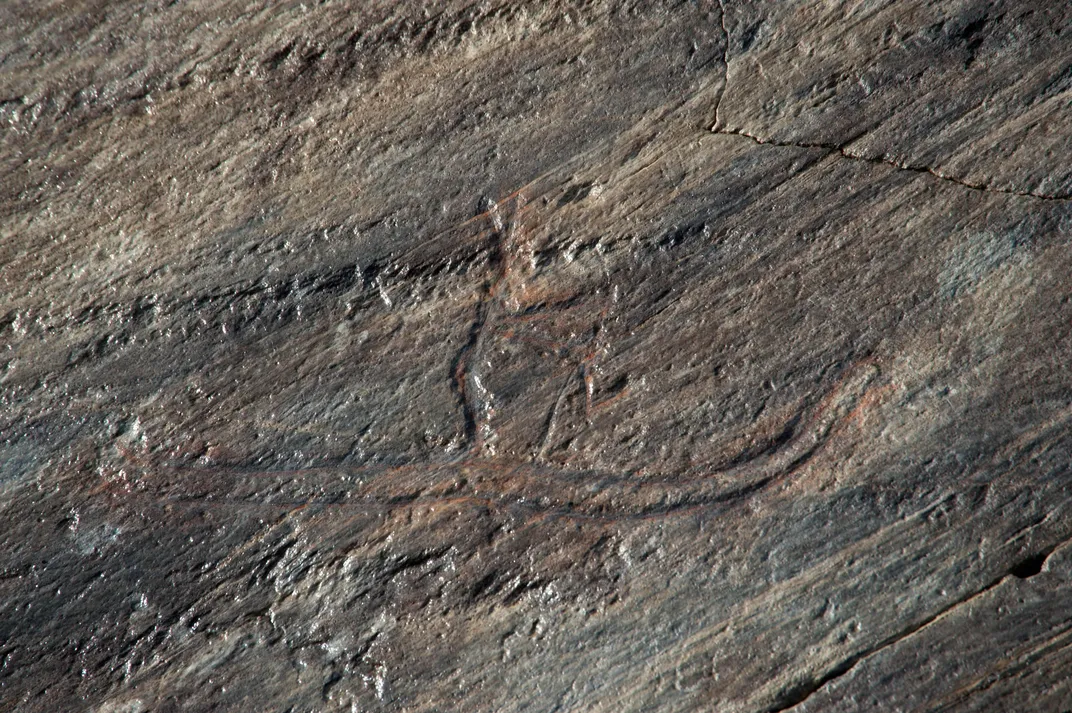One of the Earliest Images of Skiing Was Destroyed by Youths Trying to “Improve It”
The petroglyph was made 5,000 years ago
/https://tf-cmsv2-smithsonianmag-media.s3.amazonaws.com/filer/13/1d/131db363-efe5-46e8-aaa7-2839315aa52c/img_5112.jpg)
Thousands of years ago, some long-forgotten ancient human on what is now the Norwegian island of Tro took an implement to a rock wall and carved an image of a figure on skis. The petroglyph has long been a major attraction and an iconic image for the northern European nation. Unfortunately, thanks to some well-intentioned but severely misguided youths, the iconic carving seems to have been destroyed beyond repair, Richard Orange reports for The Telegraph.
While visiting the famous site, two boys decided that the 5,000-year-old carving could use some touching up. Using a sharp object, they scratched along the image’s lines in an attempt to make it stand out more. In the process, however, the boys destroyed the original markings, writes Orange.
“It’s a tragedy, because it’s one of the most famous Norwegian historical sites,” Bård Anders Langø, the mayor of the nearby Alstahaug Municipality, tells The Local. “It is one of the most internationally known symbols of Norway.”
As the oldest-known image of a person on skis, the stone age symbol is often seen as an iconic part of Norwegian culture. In addition to an important glimpse into the lives of ancient humans, the carving inspired the logo for the 1994 Norway Winter Olympics in Lillehammer, Erik Shilling writes for Atlas Obscura.

The news of the damage to the priceless petroglyph broke last week when a person staying in the area informed Tor-Kristian Storvik, the official archaeologist for Nordland County, that the petroglyph had been damaged, Orange reports.
Storvik investigated and found that in addition to the damage done to the famous carving, a nearby etching of a whale had also been harmed. The boys have since come forward and publicly apologized for the incident. Officials are keeping their identities a secret to protect the minors from potential abuse, The Local reports.
"They were trying to make it more visible actually, and I don’t think they understood how serious it was. I think now they understand," Langø tells The Local.
In the meantime, archaeologists are planning on visiting the site in September to do a closer study of the icon’s status. However, from the looks of it now, experts think the damage to the art might be irreversible.
“They are going back in September to do a bigger study, but what they can say now is that its probably damaged forever,” Langø tells The Local. “We may not ever be able to see the pictogram of the skier as it was originally made 5,000 years ago.”

